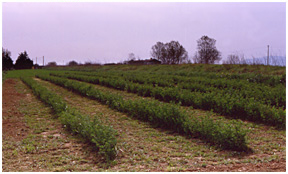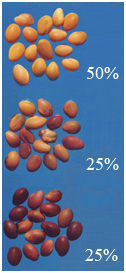

It resists well to alkaline and saline soil. It can be used in a double way: fodder/seed and is suitable for late autumnal sowing. Registered in the "Registro Nazionale delle Sementi Elette di specie agrarie" since 2005.
Use and productivity:
Trifolium alexandrinum is mainly a fodder for mowing, but good for pasture too. The most
common use is consumed as pure, but can also be used as hay, using all the precautions required for Leguminosae fodder plants.
Mowing has to be done when the plant begins to have its basic sprouts, from which the stalks for the next cut will originate.
The number of cuts and the production, beyond depend on pedo-climatic conditions, on the variety, on the sowing period and on
the growing method, dry or irriguous. In dry growing with autumnal sowing it is possible to realize 2-3 cuts. In irriguous
growing with autumnal sowing it is possible to realize 4-5 cuts. In well cared for plantations, where a double production of
fodder and seed is forseen, the second cut is used to this aim. It is possible reach a production up to 10 q/ha per seed in
specialized growing.
- Plant growth (beginning of flowering): erect
- Height main stalk (beginning of flowering): 39.8 in.
- Shape of the terminal leaflet: elliptic
- Length of the terminal leaflet: 1.60 in.
- Width of the terminal leaflet: 0.42 in.
- Ramifications with inflorescences: n. 14
- Inflorescence: sexile
- Bract length in relationship to calyx: ½
- Vexillum colour: white/cream
- Seed colour: yellow/violet
- Flowering classification: 152 days from the beginning of the year

- Annual plant with excellent capacity of regrowth after mowing
- Growth habit: erect
- Flowering period: late
- Aptitude to fodder production: good
- Aptitude to granular productione: excellent
- Ratio leaf/stalk: 0.63
- Return in dry substance: 20-23%
- Cold proof: excellent





